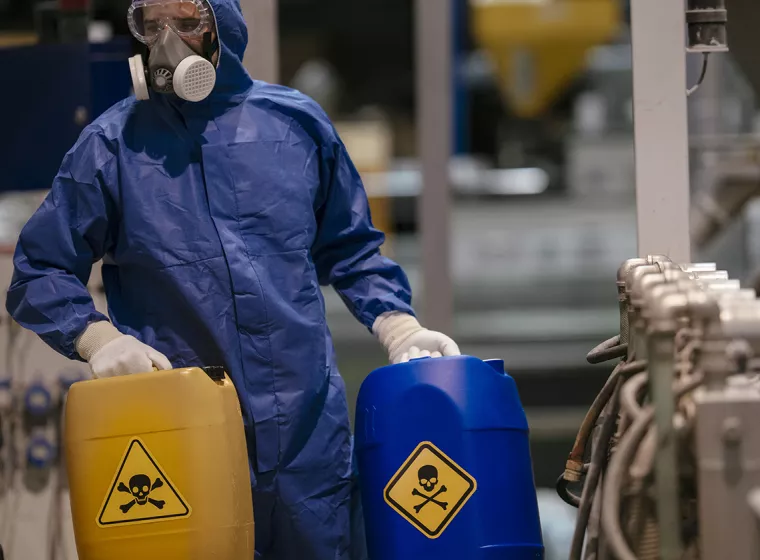November 22, 2024
About 6% of inspected products contained chemicals that are not in compliance with REACH and POPs regulations
As part of an ongoing effort to enforce regulations for chemicals of concern, the European Chemicals Agency (ECHA) launched a pilot project between November 2023 and April 2024 to inspect 4,478 cosmetic products for perfluoroalkyl carboxylic acids (PFCAs) and related substances classified as hazardous or substances of very high concern (SVHCs), including perfluorooctanoic acid (PFOA) and cyclotetrasiloxane (D4)/cyclopentasiloxane (D5).
In "Pilot Project Report on: Enforcement of Restrictions of PFCAs and Related Substances Focusing on Cosmetics," ECHA, along with national enforcement authorities in 13 European Economic Area countries participating in the project, found that of the 4,478 cosmetic products they inspected, about 6% contained substances classified as hazardous in non-compliance with Registration, Evaluation, Authorisation and Restriction of Chemicals (REACH) and Persistent Organic Pollutants (POPs) regulations. The ECHA report notes that the selection of products was not random but based on a risk-based approach.
According to the report, the two restricted substances most frequently found in non-compliant cosmetic products were perfluorononyl dimethicone — a per- and polyfluoroalkyl substance (PFAS) restricted under POPs and REACH — and cyclopentasiloxane (D5), restricted under REACH. Other banned or restricted chemicals found in the inspected cosmetic products included perfluorooctylethyl triethoxysilane, perfluorononylethyl carboxydecyl PEG-10 dimethicone, cyclomethicone (a blend of D4, D5 and D6), and cyclotetrasiloxane (D4). These chemicals have been historically used in cosmetic products for their smooth, silky texture and ability to enhance the feel and appearance of products.
Enforcement authorities have taken measures to remove the non-compliant products from the market and issued written advice to help suppliers comply with the law. ECHA is also drafting restrictions on the use of 10,000+ PFAS but is currently reviewing over 2,800 comments received on the proposal, including from industries that rely on PFAS for the production of critical technologies.
ECHA's focus on cosmetics is part of an ongoing effort to strengthen the control of substances classified as hazardous in the larger space of consumer products to protect human and environmental health and to raise industry awareness. Understanding global supply chains is crucial as companies that import, manufacture, or sell cosmetic products are responsible for ascertaining the presence of intentionally added and non-intentionally added regulated chemicals.
Next steps
In their report, ECHA recommends that industry stakeholders implement the following:
- "Industry, economic actors and responsible persons for cosmetic products should pay attention and help raise the awareness of the members that import, manufacture or sell cosmetic products that they have to follow not only the provisions of the Cosmetics regulation but also those of POPs and REACH. Current regulatory developments concerning substance classes (i.e. per- and polyfluorinated compounds and D4/D5/D6) should be followed carefully."
- "Industry should use substance identifiers (e.g. CAS, EC) that reflect accurately the composition of their manufactured substances. This is especially relevant for UVCBs."
- "Formulators of cosmetic products are advised to carefully check Section 15 of the SDS regarding the presence of restricted substances."
- "Companies selling cosmetic products are recommended to use ECHA CHEM to help them identifying whether their products contain restricted substances."
- "Industry should be aware that the definition of placing on the market differs between the regulations (POPs/REACH and Cosmetics)."
Industry impact
While understanding of the health and environmental risks associated with chemicals of concern continues to evolve, including PFAS, companies across the supply chain are increasingly motivated to determine whether and where these substances may be used in their products and processes and what they can do to facilitate compliance in light of ECHA's most recent report. While the intentional use of PFAS in cosmetics is relatively low in products sold in the EU, producers have been moving away from the use of PFAS for several years. There is a significant risk of unintended inclusion that brands and manufacturers will need to address to comply with future EU regulations.
For industry stakeholders, ECHA's report highlights the importance of a robust chemical management strategy that includes the chemical characterization of cosmetic products and supply chain management of cosmetic ingredients and products. Acting early to identify potential sources of PFAS in products can help to mitigate the risk of future product recalls, reduced consumer confidence, and lost product sales.
What Can We Help You Solve?
Exponent's health sciences and regulatory specialists provide safety consulting, design review, toxicological risk assessment, and REACH restriction and regulatory compliance services for industrial chemicals and consumer products. Our experts have years of experience investigating supply chains, working with third-party laboratories to test for specific compounds, and supporting clients in achieving their product stewardship goals.










